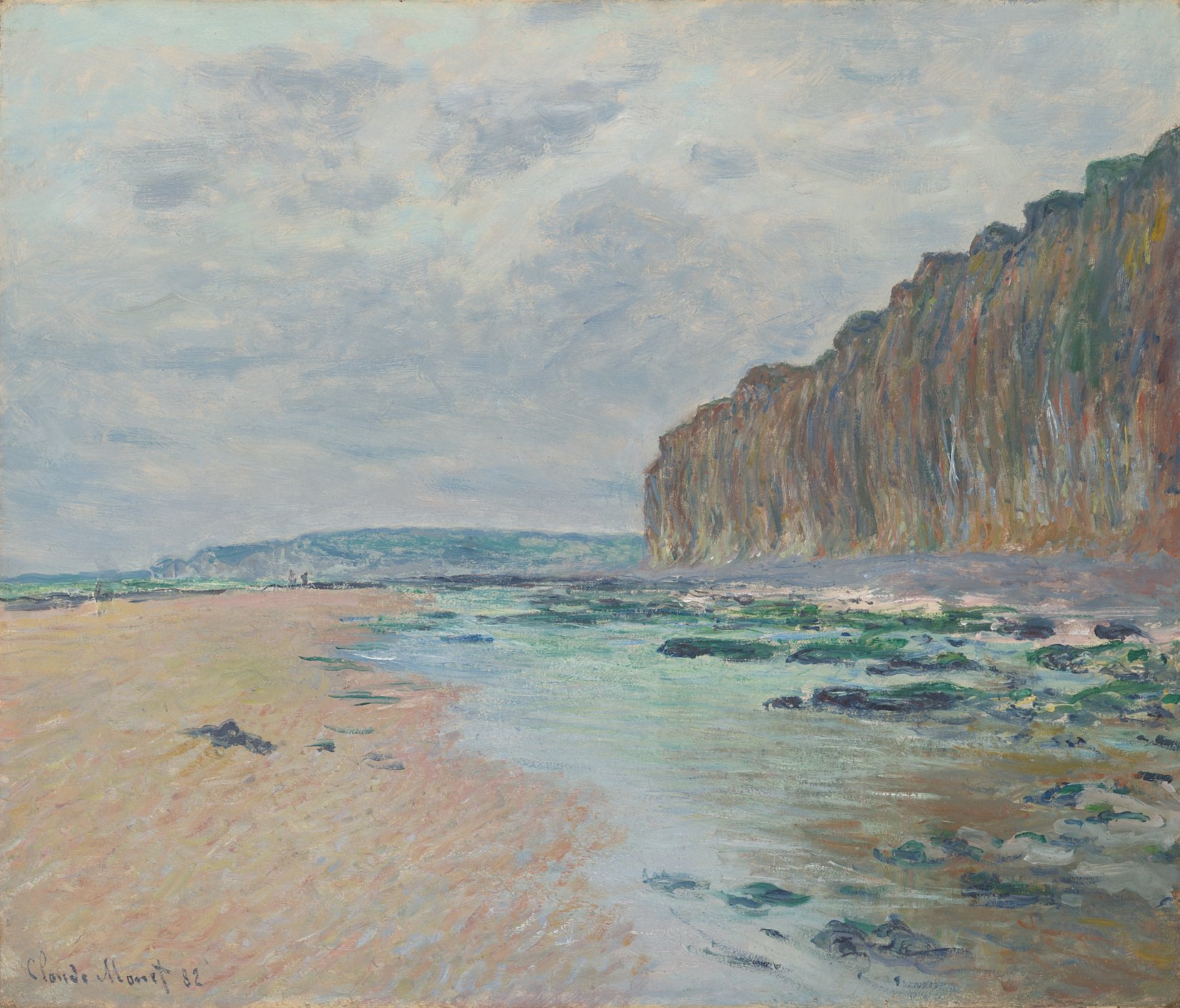Claude Monet
Low Tide (Varengeville), 1882

Claude Monet
Low Tide (Varengeville), 1882
Kunst Museum Winterthur, Schenkung von Beat Wolfer, Marianne Wolfer und Silvia Largo-Wolfer, 2000
Foto: SIK-ISEA, Zürich (Martin Stollenwerk)
During his search for appropriate motifs Claude Monet moved to Normandy in the winter of 1882. During the colder months of February and March he worked in Varengeville painting views of the coast. This picture portrays the beach at low tide and the typical steep rock faces of the region, the Falaises, on the right-hand side. There are no figures or ships in the field of vision and no distractions, so that the viewer finds himself directly in the picture.
The beach is empty and the weather is gloomy. Monet was interested in the effects of colour in this plain scenery; he focussed on the changing appearance of the sand, the water and the rocks. He chose a different type of brushwork for each element: fine parallel strokes for the rocks, short irregular strokes for the sandbank. In contrast, the pools of seawater have a peaceful, horizontal surface.
The colourfulness is muted; it is only with time that it becomes apparent. There is no black outline, only dark blue or green and there are fine red, yellow and blue stripes in the Falaises. These colours are repeated in the sandbank. It is through the placement of colours that Monet unites parts of the composition. Monet repeatedly painted scenes like this during his stay in Varengeville. The beach and rocks remain the same but the atmospheric colour changes from picture to picture.


